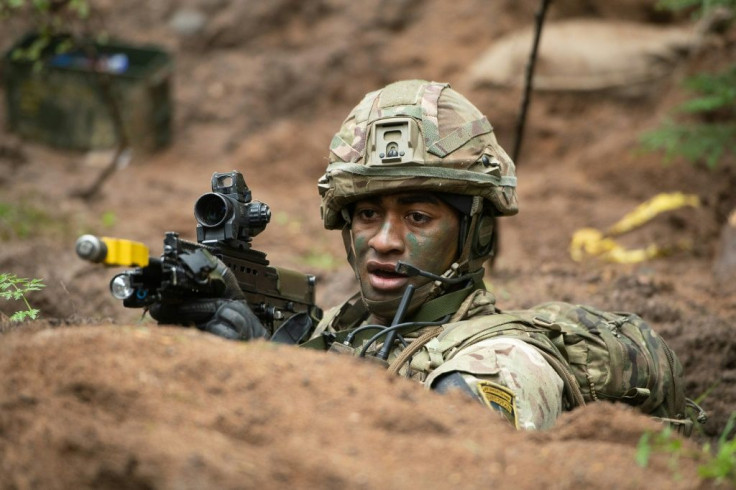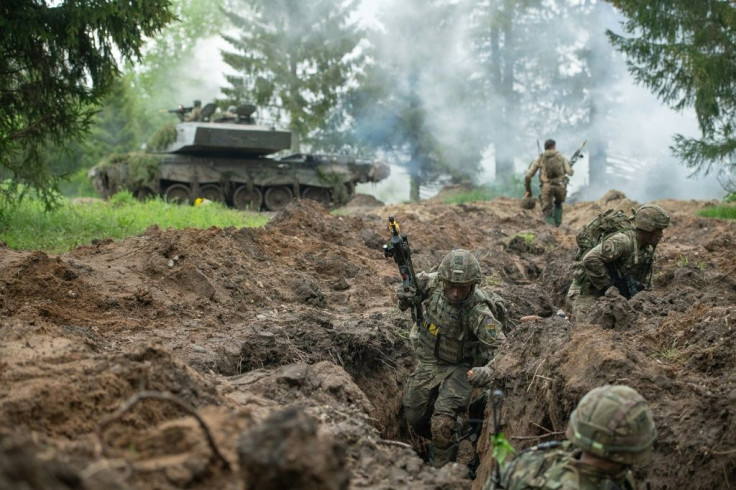Russia Looms Large As NATO Trains In Neighbouring Estonia
In a wooded corner of Estonia 120 kilometres (75 miles) from the Russian border, some 7,000 soldiers are taking part in a NATO battleground exercise.
With tanks and armoured personnel carriers on the move, minesweepers in action and the crackle of gunfire, it feels a lot like the real thing.
"The enemy is fighting with a lot of mines in very complex terrain, very wooded, very muddy, and we are progressing slowly," French Lieutenant Colonel Emmanuel Guillez said during the exercise.

Guillez is second in command of a British-led battalion that is helping to train a group of 3,000 young Estonian conscripts and reservists.
The Spring Storm exercise is taking place against a backdrop of renewed tensions between Russia and the West over several issues including Belarus and jailed Kremlin critic Alexei Navalny.
"The Russian Federation will not hesitate to use its military power against its neighbours to obtain its strategic objectives," said Major General Indrek Sirel, deputy commander in chief of the Estonian army who is overseeing the exercise.
A part of the Soviet Union until 1991, Estonia has since joined the European Union and NATO and continues to harbour deep misgivings about Russia.

Colonel Bruno Demesy, the French army's representative in Estonia, called the Baltic state "the last link in the chain".

In the exercise, the NATO allies are engaging an enemy named "Merinus" whose soldiers wear yellow tags to identify themselves.
Even though the soldiers are firing blanks and the mines are just logs, tensions can still run high and faces are tight with concentration.
On Thursday, blockages and mines had been placed on the path of the allies. As the deminers worked, they came under fire from a nearby trench.
The main aim is learning how to fight together and using NATO procedures to overcome any language barrier or differing approaches to engagement.
During the three-week exercise, temperatures finally rise above zero, the snow finally melts and the tents are becoming a bit more comfortable -- even under the pouring rain.
"Everyone starts to realise there are a lot of moving parts, different nations. It just means you're a part of a bigger picture, part of NATO," said British Lieutenant Cathy Vincent.
There is a strong emphasis on "interoperability" and the training is more intensive and complex combat than the kind seen during decades of international engagement in the Middle East.
After several days, the soldiers are exhausted.
Kaspar, a 21-year-old Estonian, said he was resting after being "killed" in the fighting.
"It is really hard, we've been here already one week in the woods. Every night we sleep three hours," he said.
But, he added, the goal is clear enough: "I think it's very important for Estonia to keep the enemy away from the country."
© Copyright AFP {{Year}}. All rights reserved.





















